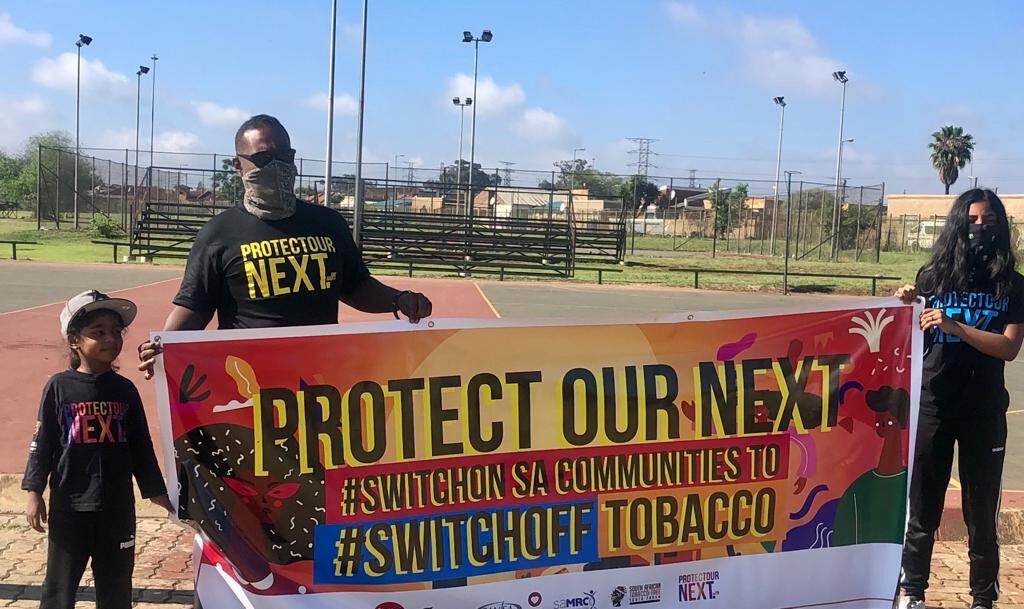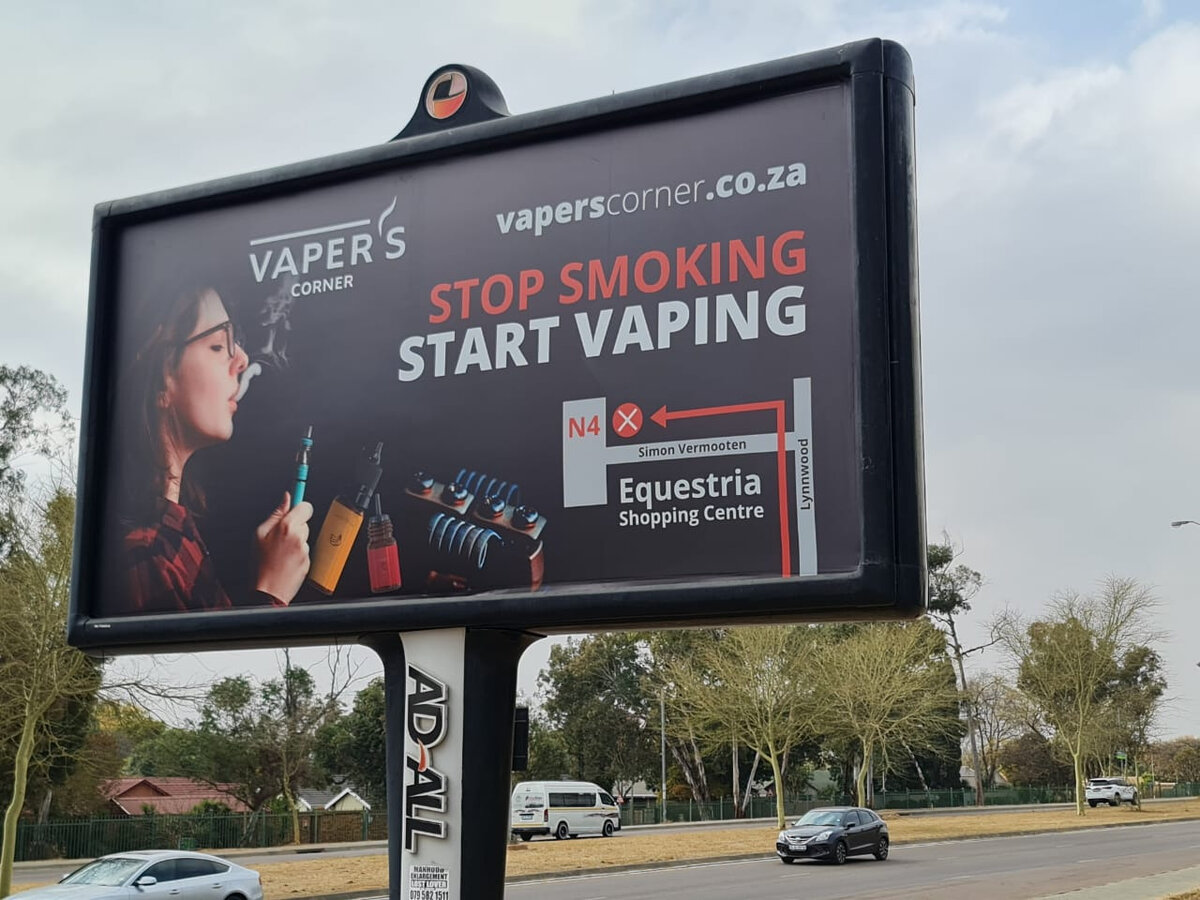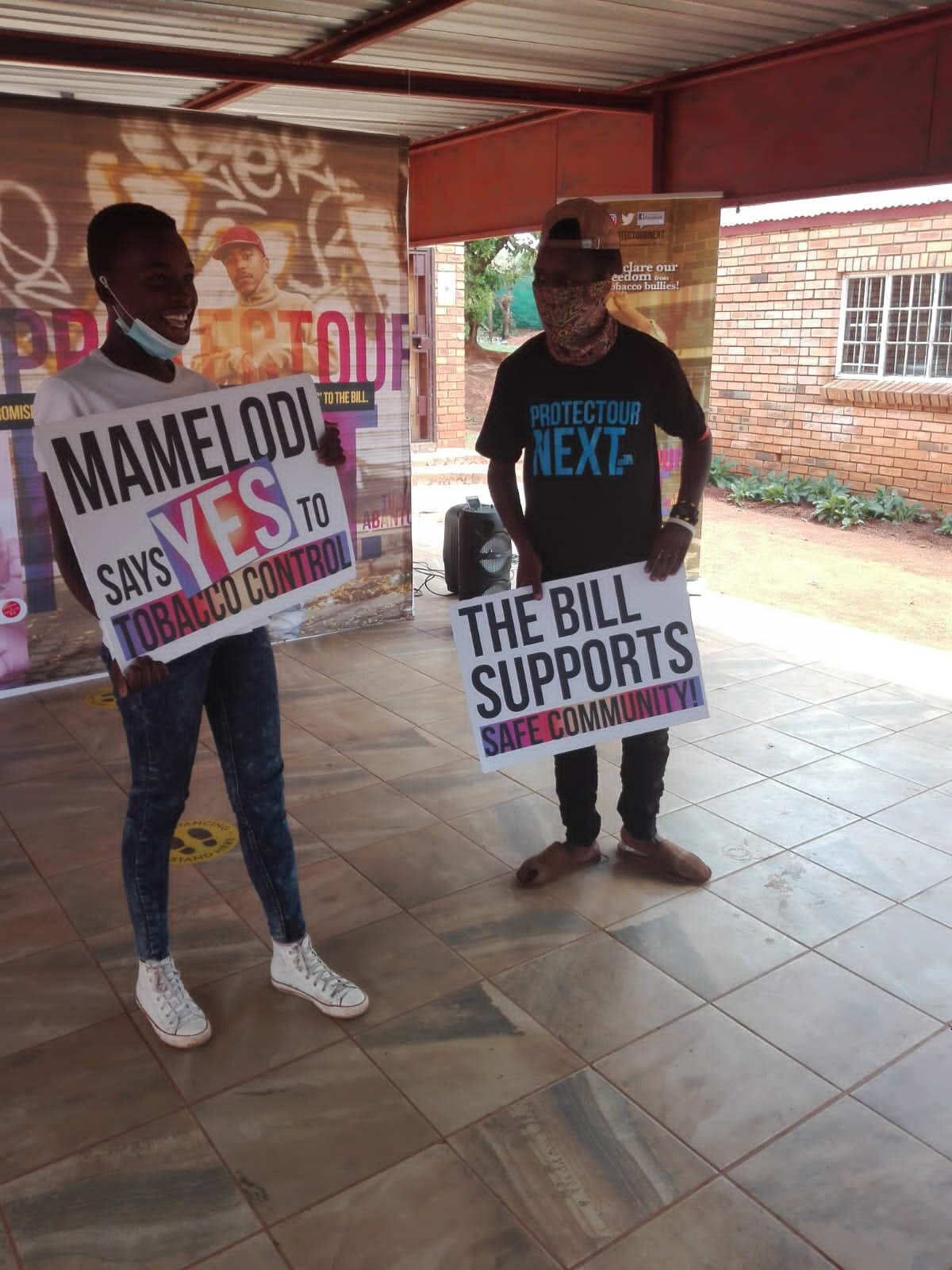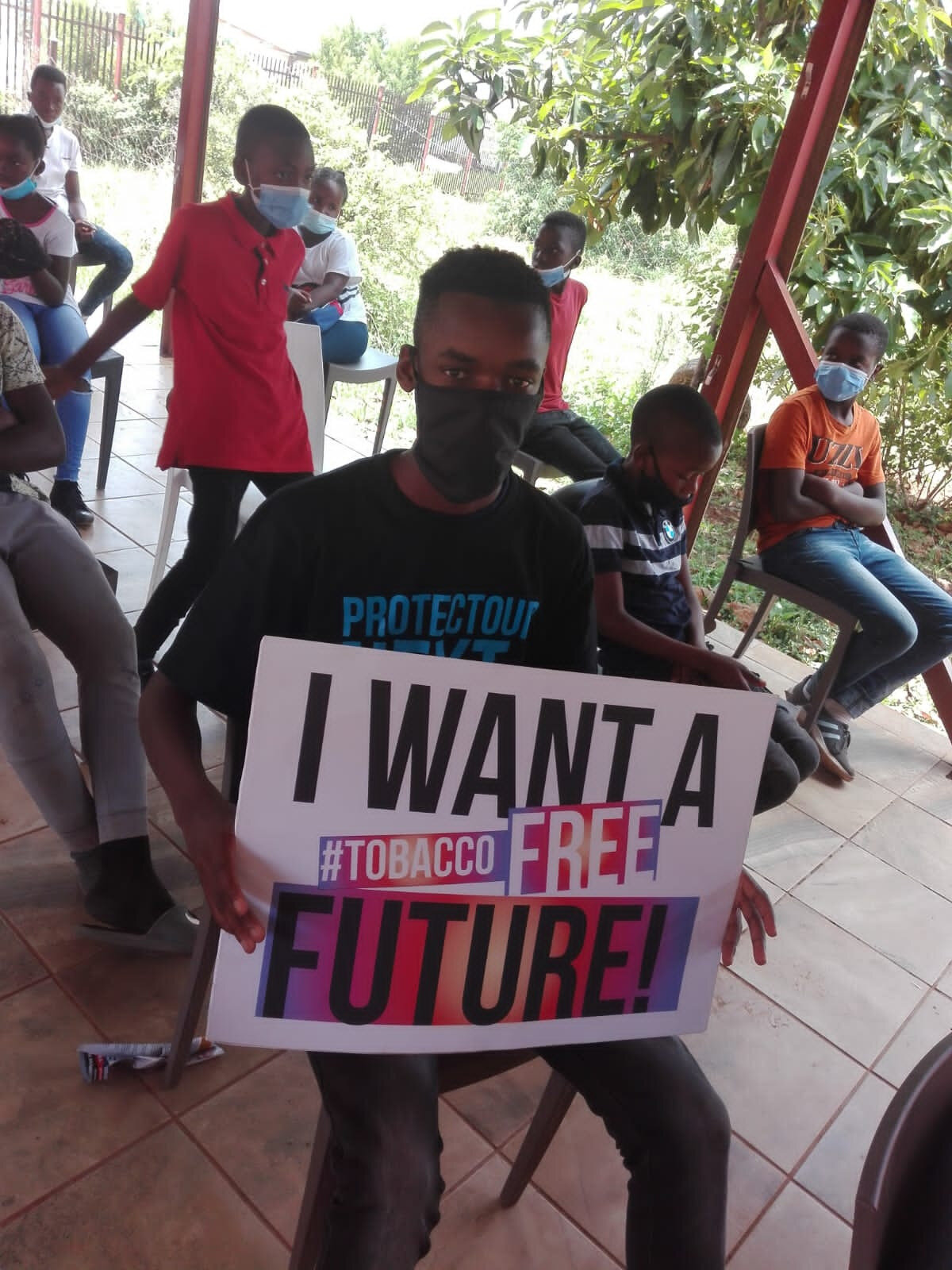- Austausch & Vernetzung
- Wissen & Lernen
- Advocacy
- Unsere Themen
Von Catherine O. Egbe, Siphesihle Gwambe und Senamile P. Ngobese
Tobacco use is the single leading cause of preventable deaths globally, killing about 8 million people annually (Reitsma et al., 2021). One in six deaths related to non-communicable diseases is linked to tobacco use (Reitsma et al., 2021). Effective tobacco control measures are therefore needed to successfully protect public health around the world especially in low resource settings like Africa.

The prevalence of tobacco use in Sub-Saharan Africa (SSA) is about 10.2% ( 2.9% among females and 17.5% among males) which is lower than all other regions of the world (Reitsma et al., 2021), however, smoking rates are increasing in SSA (Reitsma et al., 2021) and evidence suggests that it will increase a great deal in the coming decades (Peer, 2018) if nothing is done to stop this trend. SSA exhibits substantial variation in smoking rates among countries, for example, prevalence of smoking ranges from about 3.9% in Ghana to 26.7% in Lesotho (Conway, 2020). Smoking is associated with a number of diseases including about 16 different types of cancer, as well as heart disease, stroke, lung diseases, diabetes and chronic obstructive pulmonary disease (U.S. Department of Health and Human Services, 2014). Exposure to cigarette smoking also contributes to global burden of tobacco related mortality and morbidity. Tobacco-related morbidity and mortality in Africa do not only have a devastating impact on health but also on development and economic growth of the continent (Peer, 2018).
The burden of tobacco use costs more than the revenue and employment the tobacco industries may bring into the economy of a country. In sub-Saharan Africa, about 300,000 people die annually from tobacco related diseases (World Health Organization, 2015). Expenditure on healthcare for tobacco related diseases and reduced national productivity due to premature death or disability limits the government capital for other public services (World Health Organization, 2012).
In an already overburdened health care system in Uganda for example, national health expenditure for tobacco-related illnesses accounted for 2.3% of its Gross Domestic Product [GDP] (Nargis et al., 2017) higher than the global economic cost of tobacco which accounts for 1.8% of global GDP.
In South Africa, like in most countries of the world, smoking related illnesses and mortality affects the economically disadvantaged the most, which in turn results in about R30billion in healthcare cost (Boachie et al., 2020). In order to reduce the burdenof tobacco use on public health, the WHO has promoted the ratification of the WHO Framework Convention for Tobacco Control (FCTC) which came into force in 2005 (World Health Organization, 2005). The implementation of the WHO FCTC by African countries has been weak to modest, and existing legislations in these countries do not often meet the standards set by WHO (Ahluwalia et al., 2016) creating the need for many countries to update their laws.

Tobacco threatens the achievement of the sustainable development goals in SSA in many ways. For example, although several countries in SSA are among the top producers of tobacco leaf in the world (Hu and Lee, 2015) still, such countries which are dependent on tobacco for foreign exchange are among the world’s poorest, and tobacco companies continue to exploit African farmers while driving communities and households further into poverty (Otañez et al., 2009). It is also reasonable to hypothesize that daily expenditure on cigarette consumption constitutes a significant proportion of household expenditure like food and other necessities. While tobacco use causes various cancers and cardiovascular diseases (Centers for Disease et al., 2010), tobacco farming leads to deforestration and soil errotion causing food insecurity and poverty leading to hunger (WHO Regional Office for the Eastern Mediterranean, 2021). Tobacco use therefore increases poverty both at individual and population levels.
Tobacco industry interference is one of the key barriers to effective tobacco control globally, especially in low and middle-income countries (Lee et al., 2012). Due to its economic growth, youthful population and weak legislation climate, Sub-Saharan Africa is particularly targeted as an untapped market for the tobacco industry (World Health Organization, 2012). Historically, the tobacco industry has employed various tactics to influence tobacco control policy such as political lobbying, using of front groups, litigation and threats of litigation, corporate social responsibility initiatives to manipulate public opinion to their favour, and undermine tobacco control as well as discrediting proven science (World Health Organization, 2009, Tobacco Tactics, 2020). Just like any other business, the aim of such tactics is to maintain nicotine addiction in the population so as to sustain their profits. Weak or non-existent tobacco legislations make it convenient for tobacco companies to prey on SSA (Tam and van Walbeek, 2014). More so, the infrastructure for monitoring tobacco use is also weak in the SSA countries (World Health Organization, 2021).
Despite the financial advantage of the tobacco industry, CSOs across the region are countering the industry by building alliances to strengthen tobacco control governance in the region.

Industry interference in SSA goes way back to the 1990s where
companies like Philip Morris and British American Tobacco championed the
AIDS response in order to distract from the efforts to develop the FCTC
(Smith et al., 2016). Even after the FCTC came into force in 2005,
interference was significant in Africa with countries like Nigeria
reporting mostly sponsored opposition from labour groups or tobacco
farmers against tobacco control policies (Wisdom et al., 2018). The
findings of the 2021 Africa Regional Tobacco Industry Interference Index
have revealed the level of industry interference experienced in SSA.
Among the 14 countries included in the interference index, Zambia and
Tanzania reported the most interference while Uganda and Kenya reported
the least interference (African Tobacco Control Alliance, 2021).
The report further showed that the industry received privileges from
the governments like delays in tax increment or tax breaks and
interfered in tobacco-related policy development even during the
COVID-19 pandemic, while increasing their corporate social
responsibility activities (African Tobacco Control Alliance, 2021).
The findings in the 2021 Africa tobacco industry interference index
indicate that SSA is in dire need of stronger tobacco control measures
to be put in place.
Also, tobacco companies have recently adopted the ‘tobacco harm reduction’ tactics in their public relations initiatives and marketing communication (Dewhirst, 2021). Thus, the industry is unrelenting in their efforts to sustain their profits, including promoting new products under the guise of reducing harm. The introduction of new products like electronic cigarettes and nicotine pouches which are aggressively marketed to the young threatens tobacco control in SSA as this could mean the loss of previous gains made in tobacco control in the region (Egbe et al., 2018).
About 43 out of 46 countries in SSA have singed and ratified the WHO FCTC (Egbe C.O. et al., 2021). This means that such countries are obligated to protect their citizens from tobacco harms, by domesticating and implementing the provisions of the FCTC. While some progress has been made to achieve better tobacco control in the region, African governments have not matched their policy commitments, with the right action to protect the region from the exploitation of the tobacco industry (African Capacity Building Foundation, 2021). Nevertheless, progress in tobacco control in the region have been mostly achieved with the help of stakeholders (especially civil society organizations [CSOs]), whose involvement includes public awareness, advocacy, or lobbying for country-specific measures (Wisdom et al., 2018). Advocacy is a great tool in fighting tobacco, as it plays a role in acquiring support from the public and political sector for tobacco control legislation (Chapman and Wakefield, 2001). Despite the financial advantage of the tobacco industry, CSOs across the region are countering the industry by building alliances to strengthen tobacco control governance in the region (Egbe C.O. et al., 2021).
Advocacy is a great tool in fighting tobacco, as it plays a role in acquiring support from the public and political sector for tobacco control legislation.

As tobacco control stakeholders continue to tackle the industry in SSA, strategies to strengthen tobacco policy formulation and implementation in this region are urgently needed. These strategies should include anti-smoking campaigns to sensitize the public on the harms of tobacco and complete ban on tobacco advertisement, promotion and sponsorship (Peer, 2018). It is also recommended that governments adopt a code of conduct to guide interaction with the industry in line with Article 5.3 of the FCTC. (African Tobacco Control Alliance, 2021). Article 5.3 stipulates that countries protect public health policies from the commercial and vested interests of the tobacco industry (World Health Organization, 2008).
The fight for a tobacco free Africa would need all hands on deck given the sophistication and financial power of the tobacco industry. Individuals, regional and national governments, civil society organizations and international partners would need to work together to forge a common strategy and adopt a multisectoral approach to tackle the challenges posed by industry interference and a looming tobacco epidemic in the region.